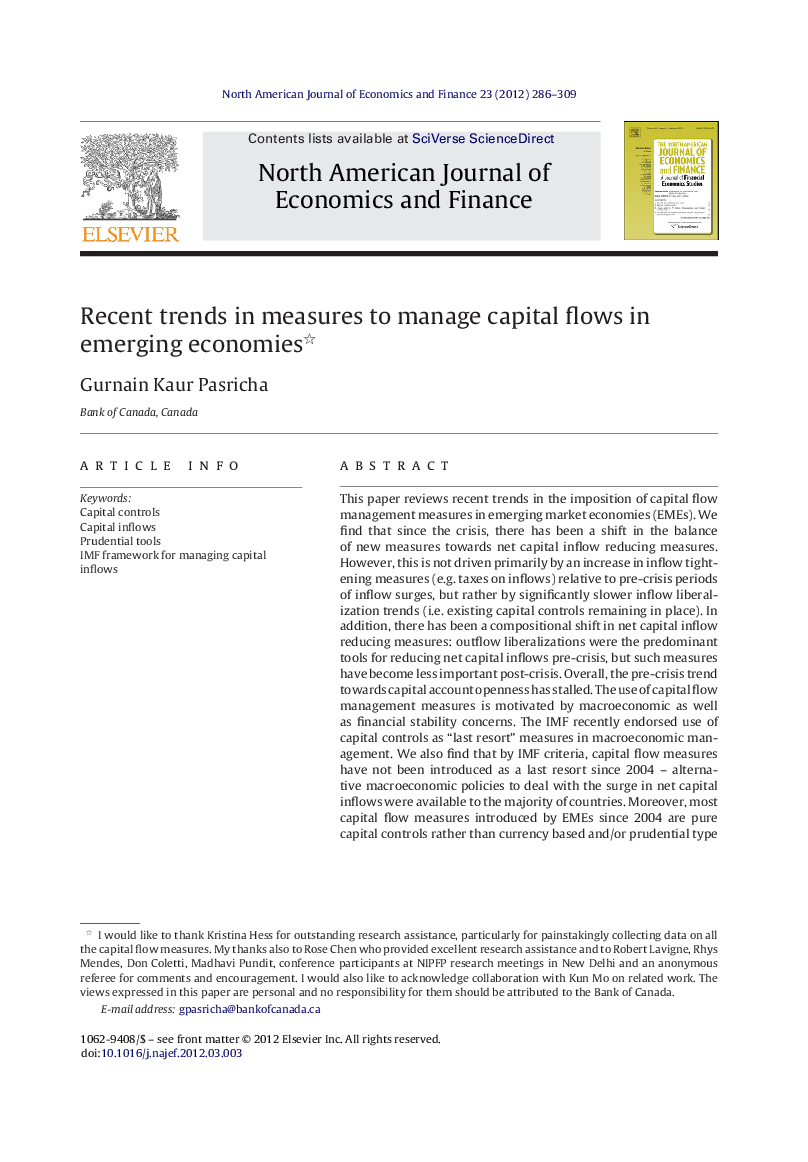| Article ID | Journal | Published Year | Pages | File Type |
|---|---|---|---|---|
| 973177 | The North American Journal of Economics and Finance | 2012 | 24 Pages |
This paper reviews recent trends in the imposition of capital flow management measures in emerging market economies (EMEs). We find that since the crisis, there has been a shift in the balance of new measures towards net capital inflow reducing measures. However, this is not driven primarily by an increase in inflow tightening measures (e.g. taxes on inflows) relative to pre-crisis periods of inflow surges, but rather by significantly slower inflow liberalization trends (i.e. existing capital controls remaining in place). In addition, there has been a compositional shift in net capital inflow reducing measures: outflow liberalizations were the predominant tools for reducing net capital inflows pre-crisis, but such measures have become less important post-crisis. Overall, the pre-crisis trend towards capital account openness has stalled. The use of capital flow management measures is motivated by macroeconomic as well as financial stability concerns. The IMF recently endorsed use of capital controls as “last resort” measures in macroeconomic management. We also find that by IMF criteria, capital flow measures have not been introduced as a last resort since 2004 – alternative macroeconomic policies to deal with the surge in net capital inflows were available to the majority of countries. Moreover, most capital flow measures introduced by EMEs since 2004 are pure capital controls rather than currency based and/or prudential type measures, suggesting that they were not directly targeted to promote financial stability. However, since the crisis, there has been a small shift towards prudential-type measures.
